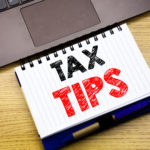5 minute read.
Andrew Needham considers whether claiming bad debt relief is as straightforward as it seems and looks at two areas that can cause confusion.
The basics of claiming bad debt relief (BDR) are contained in VATA 1994, s 36, and permit BDR to be claimed from HMRC when an invoice remains unpaid, or partly unpaid, for six months after the due date for payment on the VAT return covering the period when the BDR becomes claimable.
If the debt is eventually paid, the business has to pay the VAT back to HMRC on its next VAT return. However, there can be some twists to claiming BDR that businesses should be aware of, to make sure they get the full amount and also don’t fall foul of HMRC.
VAT only invoices
Some businesses may raise VAT only invoices from time to time when they have failed to charge VAT in error, or when they are dealing with insurance work for a VAT registered business.
Example 1: Vehicle accident repair
ABC Garages does accident repair work for insurance companies. The customer is VAT registered and can claim the VAT back on the repairs to one of its commercial vehicles. The insurance company pays £2,000 for the repairs and a VAT invoice is sent to the customer showing the net amount has been paid, but the VAT amount of £400 is outstanding and is due from the customer, which has gone into liquidation and does not pay the outstanding VAT. At first sight, BDR would appear to be claimable on the £400 on the ‘VAT only’ invoice as the whole amount is VAT.
In the Court of Session case Simpson & Marwick v HMRC [2013] CSIH 29, the court decided that in effect the BDR reclaimable would not be the full £400 in the above example. The total bill was £2,400 (i.e. £2,000 for the repairs and £400 for the VAT). ABC Garages had been paid £2,000 and £400 was outstanding. The BDR claimable was, therefore, only £66.66 (£400/6).
Flat rate scheme
There is a loophole in the flat rate scheme for small businesses (FRS) that allows a small benefit when using the cash basis. The cash basis of the FRS is similar to cash accounting and the scheme percentage only has to be accounted for to HMRC when the customers pays; therefore, you would think that bad debt relief would automatically be accounted for because if you haven’t been paid you haven’t paid HMRC the flat rate percentage. However, if a business uses the cash turnover method of accounting it is eligible to claim BDR if it meets the following conditions:
- the debt has been due six months from the date of supply;
- the tax has not been accounted for;
- the debt has been written off in the VAT BDR account.
The claim will be for the difference between the VAT charged to the customer and the amount the business would have declared to HMRC had it been paid. This is because the flat rate takes account of input tax that would otherwise have been claimed if it had been paid by its customer.
Example 2: Flat rate scheme – bad debt relief
A business issues an invoice for £1,000 plus £200 VAT (total £1,200). The flat rate percentage is 10% so it pays HMRC £120. The difference between what should have paid to HMRC and what the customer owes is £80 (£200 – £120), so it can claim the £80 as BDR in box 4 of its VAT return.
Practical tip
Businesses claiming BDR should make sure they understand how the sytem works. If they are on the cash basis of the FRS, they can claim BDR.







